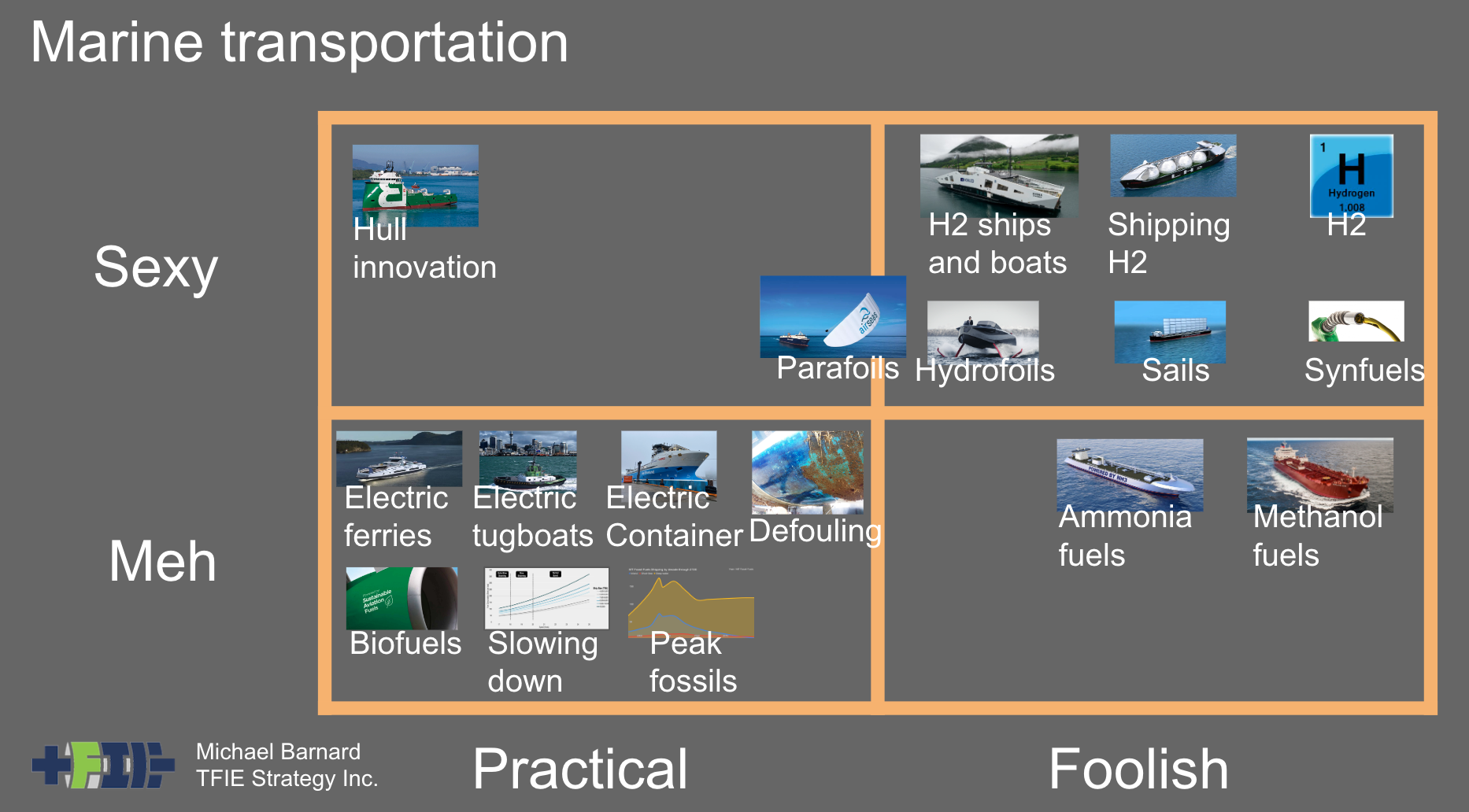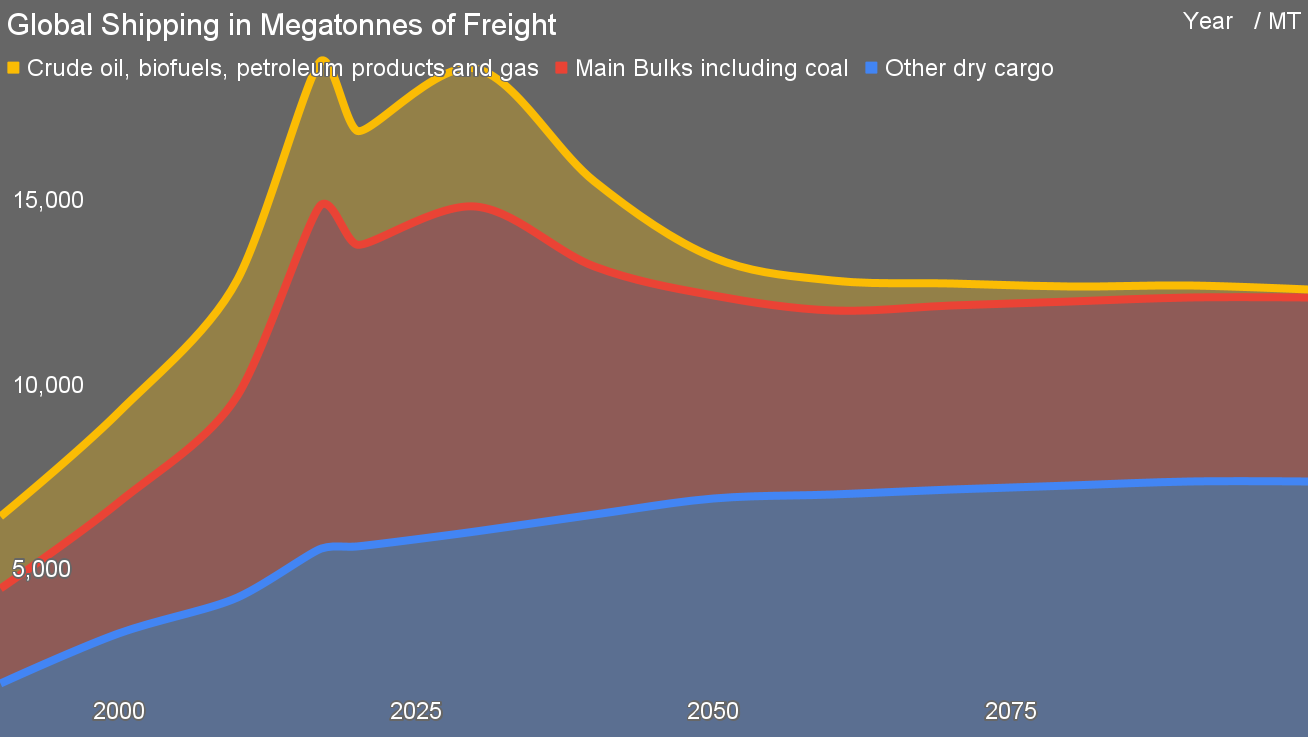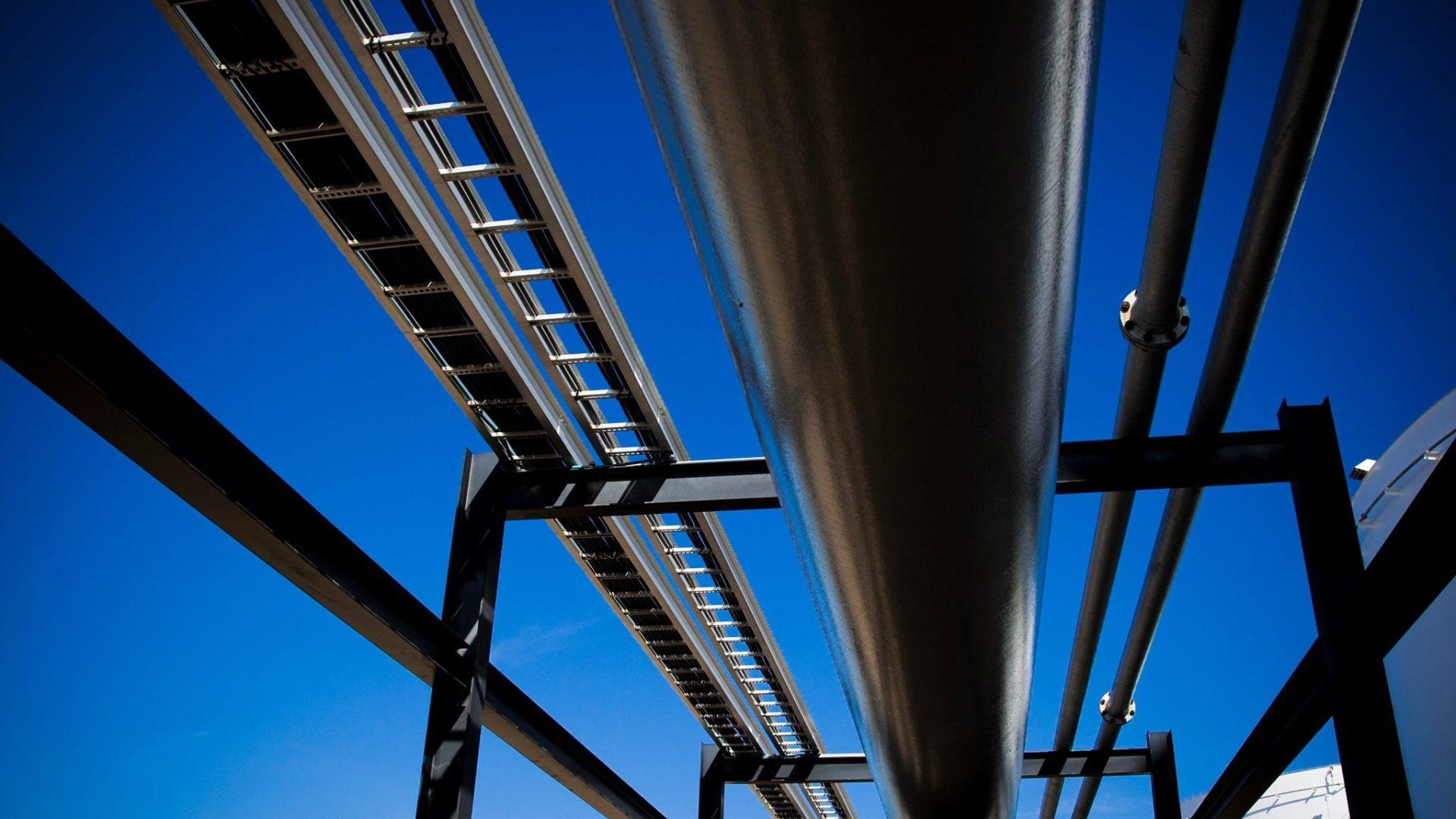
There are a lot of people trying to make wind energy a thing for cargo ships again. I’ve been looking at purported solutions on and off for at least a decade. Few of the them appear to make much sense in context of the shipping industry. Many appear to be motivated by romanticism rather than pragmatism.

Sexy vs Meh quadrant chart for maritime shipping decarbonization by Michael Barnard, Chief Strategist, TFIE Strategy
That’s why sails are in the sexy but foolish quadrant of my sexy vs meh decarbonization assessment of maritime shipping, along with hydrofoils (which I love on tiny pleasure water craft like wing foils) and hydrogen (which is just as nonsensical as a shipping fuel as it is a trucking fuel).
The only solution I’d seen which managed to cross over at least partially into the practical quadrant was bow-mounted parafoil power assist. The reasons are pretty straightforward.
Ships are high-tech simplicity. They have big engines, they love to run in straight lines at the same speed for days or weeks at a time, small crews can run huge ships and they are optimized to fit through canals and into ports globally. They exist in a complex business model where one organization builds them, another owns them, another operates them, another registers them, another insures them, another fuels them, and yet another owns the cargo that they carry.
The firm that pays for the ship is usually different than the firm which pays for the expenses of operating the ship. That’s one of the things that gets in the way of efficiency measures that require capital expenditures. The ship’s owner has to spend that money, but typically can’t get that money back from the operators who gain the benefits from it. This is the same problem with efficiency retrofits in commercial real estate, by the way, where tenants pay for utilities but landlords pay for insulation and heat pumps.
So there are business model headwinds for wind energy on ships. But those aren’t the only challenges.
Cargo ships don’t sail majestically across the briny deeps and then lower their cargo into rowboats. They berth at complex, highly automated, highly standardized ports, with most traffic flowing through the biggest 800 ports globally. They exist within a technical ecosystem that includes a lot of technology in ports to rapidly pluck cargo out of them and put it back into them. Smaller ships sometimes have winches of their own for loading and offloading at tiny ports, but this is the exception rather than the rule.
And specific bulk cargos have specific load and offload technologies, often at separate docks. Grain can’t be taken out of ships with coal loading equipment. Ammonia can’t be pumped out by equipment that deals with gasoline. Containers aren’t lifted out with the same cranes that haul out palleted cargo typically. Ships usually moor under a complex, gigantic mechanical spider’s worth of arms and gantries.
How exactly do masts and sails fit into that world? Well, they don’t. That’s a big problem for wind-powered cargo ships. Most wind energy solutions require very big things sticking up from the ship along its length. How exactly do you berth a ship like that so containers can be plucked from it?
Oh, and for container ships, where exactly do you have room to have something sticking up when the ship is a floating set of stacked rows 10 to 12 containers high? When the containers are a stack 100 feet or 30 meters tall, where exactly is there room for a sail?

Global Shipping in Megatonnes of Freight projection by Michael Barnard, Chief Strategist, TFIE Strategy Inc
Given that bulk shipping tonnage is heading for a cliff as the 40% of tonnage that is coal, oil, and gas mostly goes away, and the 15% of tonnage that is raw iron ore plummets as well — at least in my reasonably likely projection through 2100 –, the inability to use masts and sails with container ships makes a big difference to potential utility.
The next problem for wind energy and cargo ships is keels. Sailing ships need them. A sailing ship moves forward because wind is trying to push it sideways and forward, and the keel prevents it from going sideways. That enables sailing ships to go upwind, or at least not be pushed downwind. And keels are longer the bigger the sailing ship. Wind surfers get by with little dagger boards. Kite surfers get by with little fins and some creative edging. Sailing ships need really deep keels. And cargo ships have really shallow keels by comparison.
Cargo ships are designed to be pushed from the back and to have the keel and the lee side of the ship push against the water sufficiently to overcome most wind loading from upwind. They burn fuel to go upwind. They point a bit more into the wind as necessary to achieve a straight course.
Put a big set of sails on a cargo ship and a lot more force is pushing the cargo ship sideways and downwind. This has to be adjusted for, mostly with a deeper keel.
And loaded cargo ships are already problematic for a lot of ports without deep keels because they have deep drafts, the distance between waterline and lowest point of the keel. Make the keel a lot bigger, and the draft by necessity gets deeper. Retractable keels exist for sail boats, but that’s not really an option for a cargo ship.
Next up, masts for sails wouldn’t just sit on the deck, they’d pierce the deck and be mounted on the hull. And the hull needs to be structurally sound enough for this. The masts would not be small, and on normal ships, they’d be along the center line, so would take up cargo space in addition to the problem of getting in the way of loading and unloading. Retrofitting sails that actually do anything to most existing bulk cargo ships would take a lot of extra metal below decks, and a really good engineering assessment to ensure that they could even survive the strain.
Finally, at least for this piece, there’s the problem of crews. They cost money. Ships are optimized and automated to reduce the crews as much as is reasonable given various port and sailing duties. A typical bulk coal or iron ore carrier of 150,000 to 175,000 tons would have 20 to 30 crew members. Smaller ships might have eight to ten.
Sailing ships that used to carry 200 tons of cargo had 20 to 30 crew members. We are moving 750 times as much cargo a lot faster with the same number of personnel. Cargo shipping is cheap unless you add a lot of crew. And most sailing technologies are going to require at least a few more people to manage them.
I’ve assessed several sailing technologies and setups for cargo ships. Magnus effect rotors are very interesting, as the same spin that makes a baseball curve in mid-air can be used to generate forward movement in a ship with vertical cylinders, but they really get in the way of pretty much everything noted above. Fabric sails on masts are just manual effort nightmares which pleasure and competitive sailors curse as much as they delight in when they are trimmed and working beautifully. Modern rigid wing sails that grew out of battened, almost rigid windsurfer sails, built in the same manner as wind turbine blades, and used on the massive, absurdly complex, foiling America’s Cup sailboats that crash spectacularly these days, just get in the way of everything too.
Only the bow-mounted parafoil passed my sniff test. Autolaunching and furling? Check (most of the time at least). Single attachment point? Check. Out of the way of cargo loading and unloading? Check. Relatively inexpensive? Check. Most power aligned with pulling the hull in the direction it wants to go through the water? Check. Even then, they’ve been having trouble finding buyers due to the business model challenge.
But this week, the Pyxis Ocean launched in China. The big shipping firm Cargill paid to have the Mitsubishi-owned ship retrofitted by Yara Marine with a couple of first-of-a-kind 123ft (37.5m) tall, rigid, complex sails designed by Bar Technologies, which is a spinoff company of an America’s Cup team (video). Did I mention the complexity of the business model challenge?
The solution has a couple of things which at least partially overcome the challenges listed above. They are mounted on one side of the ship and fold down parallel to the deck, getting out of the way of offloading and loading technologies. The sails are mounted nearer the front of the ship so more of the energy is towing the ship rather than pushing it sideways.
But there are concerns. The side mounting of the sails suggests, at least to me, that the ship will be able to sail under significant power with wind only from one side of the ship, but not the other. As I think through the vectors of force, it appears likely that maximum power will only be available when the wind is coming from the side the sails are on, with much less power available when the wind comes from the other side. Otherwise, the ship would be heeling over, which sailors think is fun, but cargo ship personnel think is a sign that something is seriously wrong and they should be getting the lifeboats ready.
In theory, the side mounting might minimize cargo tonnage reductions. Hard to say.
But the complexity of the structure which the sails are mounted on is concerning. The ‘mast’ comes up from the bottom side of the hull to the deck, and then there’s a mechanism jutting above the deck. That mechanism does three things, and the combination is non-trivial.
The first thing it does is raise and lower the 37.5-meter steel and fiberglass wing structure from horizontal to vertical and back. The weight of the wings is unstated, but you’ll get a sense that they are heavy when I start talking about the next bits. That matters because there are no apparent guy wires assisting with the raising and lowering. All the force of raising and lowering a 37.5 meter, heavy along its length, wing structure is going through the mounting structure. That means it has to be very strong.
The second thing the mechanism does is yaw the sail system around. That means it is pivoting it around its vertical axis. That’s fairly straightforward compared to raising the sail, at least until wind starts hitting it.
And that’s the third thing it has to do, not collapse when the sail is catching the wind. Loading on this joint will be very high for any useful power to be generated, so in addition to having to be absurdly strong just to pivot the heavy wing to vertical and back, it has to be absurdly strong in a different direction of strain to keep from collapsing sideways. One hopes it doesn’t during the trial run.

There’s one more bit to this steel and fiberglass wing structure I keep talking about. Why ‘wing structure’? Well, it’s actually three different fiberglass and steel wings attached with gearing at the top and bottom. The smaller 5-meter-wide wings on either side of the main wing can align themselves in all sorts of ways. They remain parallel to it along the vertical axis, but can move forward and back and yaw independently of the large wing. This is all in aid of catching more of the wind more efficiently, but it’s pretty complex, and of course adds weight.
Remember that 37.5-meter wing? Well, every meter you go up it, the more the force that any weight there applies stress and strain to the bottom structure and the wings themselves. Wind turbines get around this in part by making the blades skinnier and narrower as they approach the tips. But these wings are the same size and mass all the way up, and then at the top of the wings there’s a bunch of metal cogs and chains needed to enable all of the movement of the side wings relative to the main wing. That’s a pretty serious engineering challenge, and one that goes up exponentially with length and size of wings, not linearly I believe.
All that force is going through that complex mechanism above the deck too. This makes it a scaling problem, in my opinion. The Pyxis Ocean isn’t a big ship. Remember that relatively normal bulk carriers are in the 150,000 to 175,000 tonnage capacity. The Pyxis clocks in at just over 43,000 tons capacity. That’s a scale difference where non-linear forces will start to impact it as masts get longer and sails get bigger. I suspect that means that the bigger the ship, the less this sail solution will be able to do for it. It’s an interesting question of whether this matters, as the bigger bulk ships are for coal, oil, and iron ore, in any event.
All in all, I think the Bar Technologies/Cargill/Yara/Mitsubishi effort is very interesting from an engineering perspective, but not that interesting from a decarbonization perspective. I suspect this solution won’t end up on more than a tiny handful of ships, if it ends up on any besides the Pyxis. I doubt that there will be future iterations to speak of. I could be wrong, of course, but this really doesn’t move the needle for maritime decarbonization compared to the big levers of efficiency, batteries and biofuels.
I don’t like paywalls. You don’t like paywalls. Who likes paywalls? Here at CleanTechnica, we implemented a limited paywall for a while, but it always felt wrong — and it was always tough to decide what we should put behind there. In theory, your most exclusive and best content goes behind a paywall. But then fewer people read it! We just don’t like paywalls, and so we’ve decided to ditch ours. Unfortunately, the media business is still a tough, cut-throat business with tiny margins. It’s a never-ending Olympic challenge to stay above water or even perhaps — gasp — grow. So …



